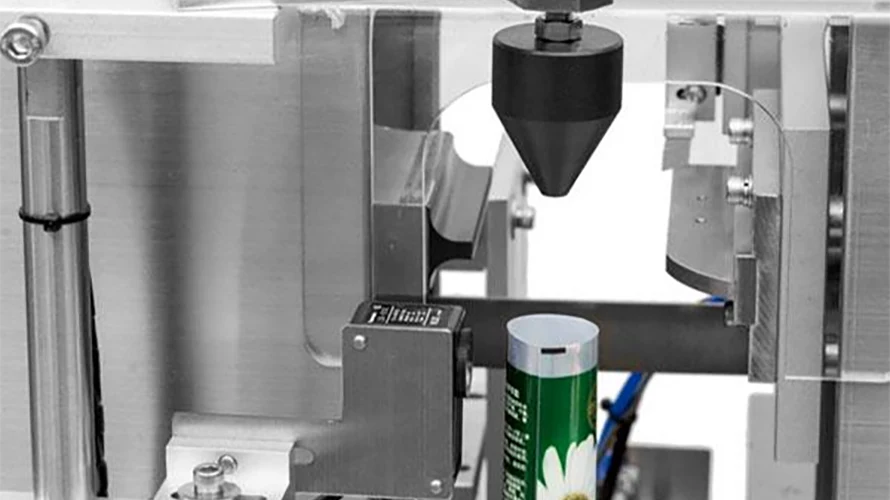Ultimate Guide: How To Fill Cosmetic Tubes Effectively

About Author: Lucas Ji
Founder of UKPACK, Chief Packaging Designer with 18 years of experience, Red Dot Award Winner
Specialize in custom, innovative, and sustainable packaging solutions for cosmetics, skincare, personal care, hair care, food and beverage, and more.

- Understanding Cosmetic Tubes
- Choosing the Right Tube for Your Product
- Essential Equipment for Filling Cosmetic Tubes
- Preparing Your Product for Tube Filling
- Step-by-Step Guide to Filling Cosmetic Tubes
- Quality Control During and After Filling
- Cleaning and Maintenance of Filling Equipment
- Safety Precautions and Best Practices
- Enhancing Efficiency in Tube Filling
- Conclusion
- FAQs
Filling cosmetic tubes effectively is a crucial step in the cosmetic manufacturing process. Whether you’re working with skincare creams, gels, or liquid makeup, the goal is to ensure a seamless, consistent fill with minimal waste. In this guide, we’ll walk you through everything you need to know to fill cosmetic tubes effectively, from choosing the right tube type to optimizing your filling process.
Understanding Cosmetic Tubes
Types of Cosmetic Tubes
Cosmetic tubes come in various styles, each suited to different product types and purposes. Here’s a look at some popular options:
- Squeeze Tubes: Ideal for lotions and creams that require easy dispensing.
- Airless Pump Tubes: Protects sensitive formulas by preventing air exposure.
- Twist-up Tubes: Common for lip balms and solid cosmetics that need a retractable design.
Materials Used for Cosmetic Tubes
Choosing the right material can impact product preservation and the overall user experience. Here are a few common materials used for cosmetic tubes:
- Plastic: Durable and versatile, plastics like PE and PP are popular choices.
- Aluminum: Offers an eco-friendly, lightweight option often used for toothpaste and similar products.
- Laminated Materials: Combines multiple layers for enhanced barrier protection.
Choosing the Right Tube for Your Product
Factors to Consider
Selecting the ideal tube for your product is crucial for both functionality and brand representation. The consistency and usage of your product should guide this decision. For thicker creams, opt for squeeze tubes that allow easy dispensing, while liquid serums might benefit from airless pump designs to maintain freshness and prevent contamination.
Beyond functionality, consider the tube’s aesthetic appeal. A well-designed tube not only protects the product but also reinforces your brand’s image on shelves. Envision your packaging as a silent ambassador of your brand, capturing attention and conveying quality.
Matching Tube Size to Product Volume
Choosing the right tube size prevents the common pitfalls of overfilling and underfilling, ensuring a professional look and optimal user experience. For skincare products, sizes typically range from 15ml to 150ml, allowing for flexibility depending on your product’s intended use and market demand.
Imagine offering your customers a perfectly proportioned product, where every detail is meticulously aligned with their needs and expectations.
Essential Equipment for Filling Cosmetic Tubes
Types of Tube Filling Machines
The choice of tube filling machine can significantly influence production speed and efficiency. Here are some common options:
- Manual Fillers: Cost-effective and suitable for small batches.
- Semi-automatic Machines: Balance cost and efficiency, ideal for medium production.
- Automatic Filling Machines: Best for high-volume production, ensuring speed and precision.
Additional Tools and Accessories
Investing in quality nozzles and sealing equipment can enhance the filling process. Various nozzle types can accommodate different consistencies, while heating and sealing machines are essential for finalizing the tube.
Preparing Your Product for Tube Filling
Formulation Considerations
Understanding the unique needs of your product is essential for successful tube filling. Different formulations require specific handling techniques. For example, viscous creams might need gentle warming to ensure smooth flow during filling, while liquid products often require air removal to prevent unsightly bubbles. Imagine each product type as having its own personality, demanding a tailored approach to achieve the best results.
Pre-filling Preparation Steps
Preparation is the cornerstone of consistent and efficient filling. Here’s a straightforward guide to ensure success:
- Warming the Product (if needed): Gently heat viscous products to enhance their flow properties, ensuring they fill tubes smoothly without clogs.
- Removing Air Bubbles: Use techniques like vacuum deaeration to eliminate air pockets, ensuring a clean and professional-looking end product.
- Ensuring an Even Texture: Stir or homogenize the product thoroughly to achieve a uniform consistency, crucial for maintaining quality and appearance.
Think of these steps as setting the stage for a flawless performance, where every aspect of the product is perfectly prepared for its journey into the tube.
Step-by-Step Guide to Filling Cosmetic Tubes
Setting Up Your Equipment
Getting your equipment ready is like setting the stage for a great performance. Make sure your filling machine is securely positioned and stable. Adjust the settings to control fill volume precisely. This is crucial to minimize spills and avoid underfilling, ensuring each tube is perfect. Think of it as tuning a musical instrument; precision is key!
Filling Process
When filling by hand, it’s all about the steady hand. Hold the tube firmly to prevent any wobbling that might lead to spills. If you’re using a machine, double-check that the tube is perfectly aligned with the nozzle. Start the filling slowly—like pouring a delicate sauce—to prevent overflows and maintain a clean workspace. Remember, practice makes perfect!
Sealing and Capping the Tube
Sealing is where you lock in all your hard work. Choose between heat-sealing or ultrasonic sealing methods based on your tube material. Make sure the seal is tight and secure to preserve product integrity. When applying caps, twist them on snugly to ensure no leaks. It’s like putting the lid on a jar; it keeps everything fresh and safe.
Quality Control During and After Filling
Ensuring Proper Fill Levels
Consistency is key in the world of cosmetics. Regularly check your filled tubes to ensure they meet the desired fill levels. Use measurement tools or visual checks to maintain uniformity in presentation. Imagine each tube as a mini work of art—you want them all to look just right!
Detecting and Addressing Defects
Stay alert for potential issues like air pockets or leaks. These can affect the product’s performance and customer satisfaction. If you spot any defects, don’t hesitate to tweak the filling process. It’s like fine-tuning a recipe; small adjustments can make a big difference in quality. Keeping a keen eye ensures that your final product is nothing short of top-notch!
Cleaning and Maintenance of Filling Equipment
Daily Cleaning Protocols
Maintaining hygiene is crucial in cosmetics production. After each use, thoroughly clean your equipment to prevent any cross-contamination. Use warm water and approved cleaning agents, ensuring all residue is removed. Think of it as giving your machine a refreshing bath—it keeps everything spotless and ready for the next batch.
Regular Maintenance Tips
Routine inspections are like health check-ups for your equipment. They help prolong your machine’s lifespan and maintain peak efficiency. Schedule regular servicing to tackle wear and tear before it becomes a problem. Just like servicing a car, keeping up with maintenance ensures smooth and reliable operation, saving you time and hassle in the long run.
Safety Precautions and Best Practices
Personal Protective Equipment (PPE)
Your safety is a top priority. Always wear gloves, masks, and safety glasses when handling materials. PPE not only minimizes your exposure to potentially harmful ingredients but also helps maintain the sterility of the product. Think of it as a barrier that keeps both you and your product safe, ensuring a worry-free production process.
Maintaining a Clean Work Environment
A clean workspace is essential for quality production. Designate a specific area for filling and adhere strictly to sterilization protocols. This reduces the risk of contamination and ensures your products meet the highest standards. Visualize your work environment as a pristine laboratory—every surface sparkling and ready to support your craft.
Enhancing Efficiency in Tube Filling
Speeding Up the Process
To boost efficiency, especially with large batches, consider integrating automation into your production line. Automated systems can significantly speed up the process while maintaining consistency. For manual filling, look at your workflow and identify any unnecessary steps that can be eliminated to streamline operations. Imagine transforming your production area into a well-oiled machine, where every movement is optimized for speed and precision.
Reducing Waste and Improving Sustainability
Adopting eco-friendly practices is not only good for the planet but also enhances your brand’s image. Use sustainable materials and focus on minimizing product spillage during the filling process. This not only reduces waste but also lowers costs. Envision a production line where every drop is accounted for, contributing to a greener, more sustainable future while maximizing your efficiency.
Conclusion
Filling cosmetic tubes efficiently requires attention to detail, the right equipment, and best practices for quality assurance. By following these guidelines, you can ensure a smooth, consistent, and efficient filling process.
Additionally, UKPACK provides a wide variety of cosmetic tube styles to meet your specific needs, making it easier to find the perfect solution for your product. Contact UKPACK today to explore how our cosmetic tube options can elevate your product line!
FAQs
Q1. What type of filling machine is best for small businesses?
Semi-automatic fillers offer a balance of efficiency and cost, making them ideal for small businesses.
Q2. Can I fill tubes manually at home?
Yes, for small batches, manual filling is a viable option, though it may take more time.
Q3. How do I prevent contamination during the filling process?
Use sterile equipment, wear PPE, and fill in a clean environment to prevent contamination.
Q4. What’s the difference between squeeze tubes and airless pump tubes?
Squeeze tubes are suited for creams, while airless pumps are ideal for products that need to avoid air exposure.
Q5. Are there sustainable options for cosmetic tube materials?
Yes, aluminum and biodegradable plastics are eco-friendly options.